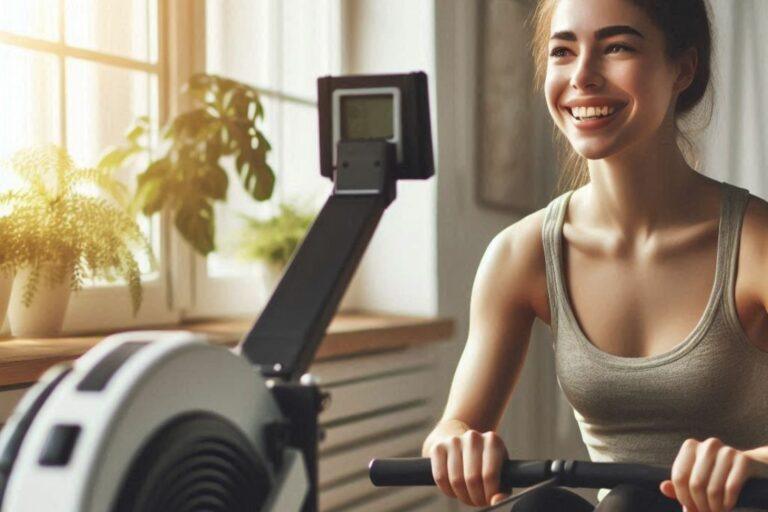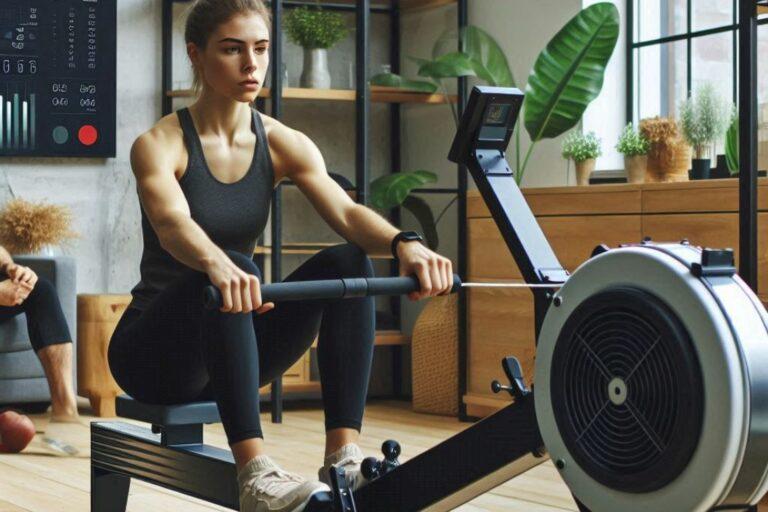Did you know that just 30 minutes of rowing can burn as many calories as a brisk run?
It’s true!
Rowing is a hidden gem in the world of fitness, offering a full-body workout that sculpts your muscles and torches fat.
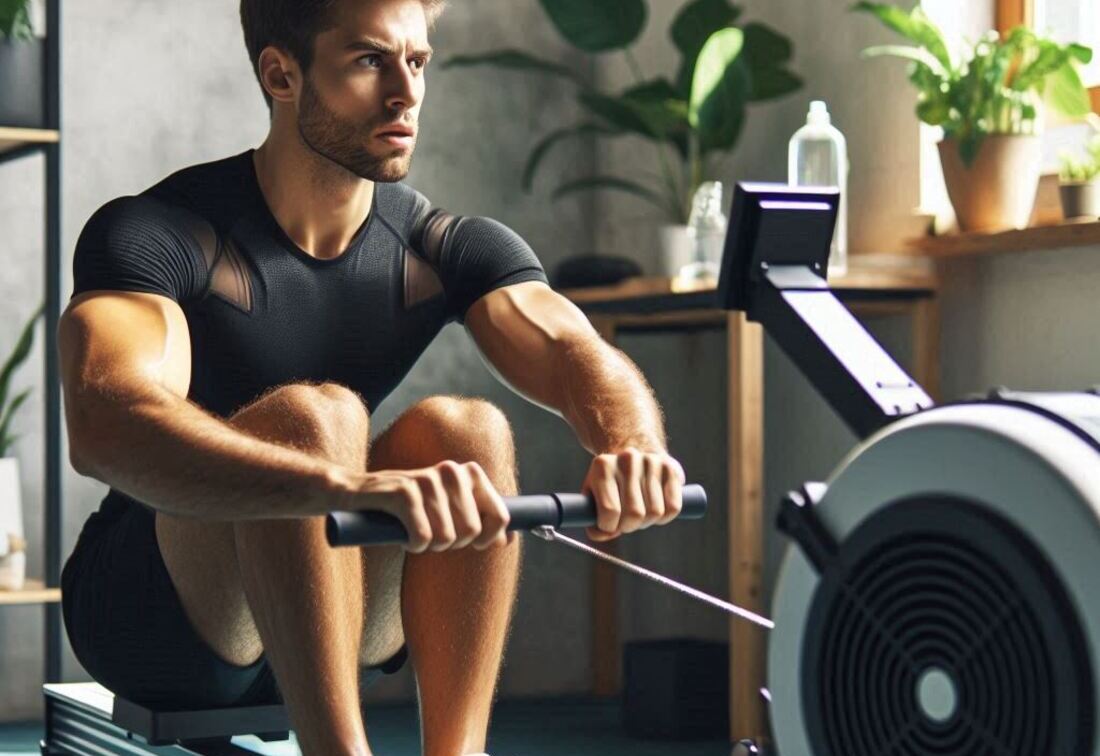
Yet, many people struggle to maximize the potential of their rowing machines, leaving them frustrated and unmotivated.
It’s time to unlock the full power of your rowing machine.
This guide is packed with effective workout routines designed to help you burn calories, build muscle, and achieve your fitness goals.
Let’s get started!
Understanding the Benefits of Rowing for Fat Burn and Muscle Gain
Rowing is a dynamic exercise that offers a unique blend of cardiovascular benefits and muscle-building potential.
Let’s delve into how rowing can help you achieve your fitness goals.
Rowing as a Calorie-Burning Exercise
Rowing is renowned for its calorie-burning efficiency.
Engaging multiple muscle groups simultaneously demands significant energy expenditure, leading to increased calorie consumption.
Whether you opt for steady-state rowing or high-intensity intervals, you’ll torch calories effectively.
Muscle Engagement During Rowing
Contrary to popular belief, rowing is not just an arm workout.
It’s a full-body exercise that targets major muscle groups:
- Legs: Provide the primary power source for the drive phase.
- Core: Stabilizes the body and transfers power from legs to upper body.
- Back: Engages the latissimus dorsi and other back muscles for the pulling phase.
- Arms: Assist in the pulling motion.
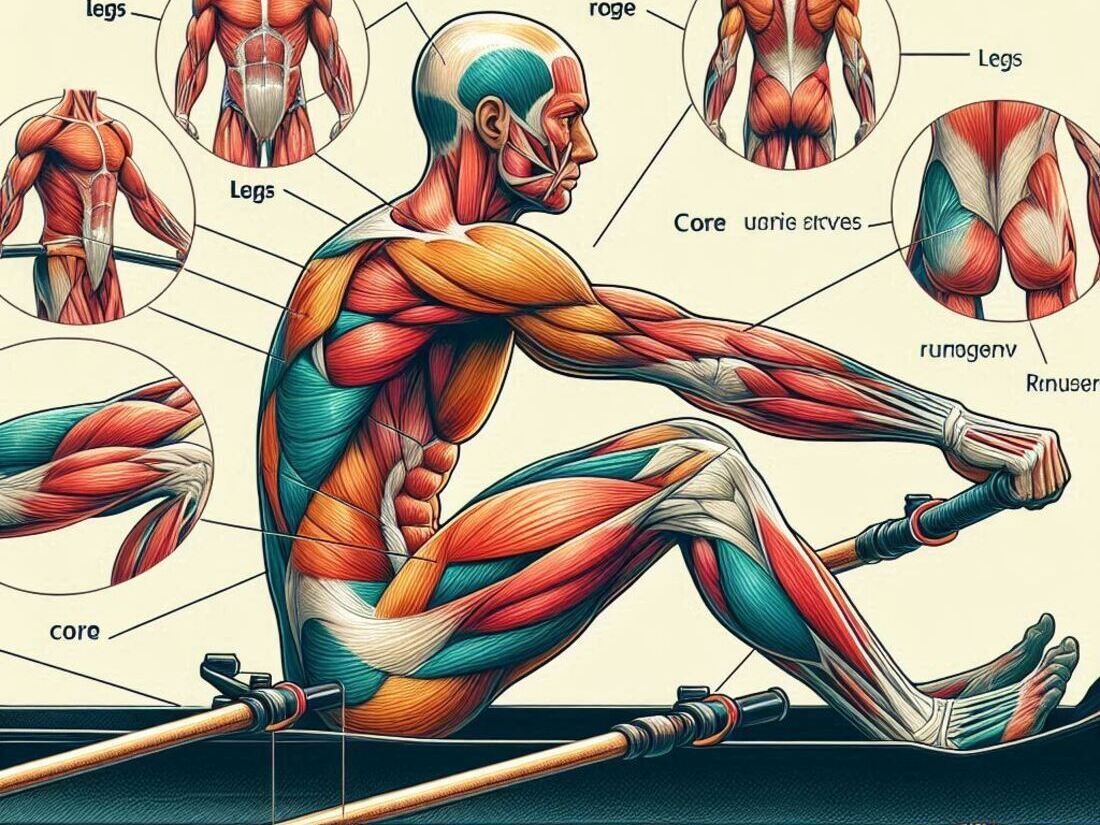
Regular rowing sessions can lead to noticeable increases in muscle tone and strength.
Combining Rowing with Other Exercises for Optimal Results
While rowing is a fantastic exercise, combining it with other activities can enhance your overall fitness.
Consider incorporating strength training, such as weightlifting or bodyweight exercises, to complement your rowing routine and build lean muscle mass.
Additionally, incorporating cardio exercises like running or swimming can improve your cardiovascular endurance.
By understanding the multifaceted benefits of rowing, you can create a well-rounded workout plan that targets fat loss and muscle gain.
Key Takeaways: Rowing is a full-body exercise that effectively burns calories and builds muscle. Combining rowing with other activities can enhance overall fitness.
Creating Effective Rowing Workouts
To maximize the benefits of your rowing machine, it’s essential to structure your workouts effectively.
Let’s explore the key components of a well-rounded rowing routine.
Basic Rowing Technique
Before delving into workouts, mastering proper rowing technique is crucial.
Focus on engaging your legs for power, maintaining a strong core, and coordinating arm movements smoothly.
A strong foundation in technique will prevent injuries and optimize results.
Workout Structure
A typical rowing workout consists of three main components:
- Warm-up: Gradually increase your heart rate and prepare your muscles for exertion. Light rowing, dynamic stretches, and arm circles are effective warm-up exercises.
- Main set: This is the core of your workout where you focus on achieving your fitness goals. It can include various intensities, durations, and exercise combinations.
- Cool-down: Gradually reduce your heart rate and promote muscle recovery. Light rowing and static stretches are beneficial.
Intensity Levels
Varying your workout intensity is essential for progress. Incorporate the following levels:
- Low intensity: Steady-state rowing at a comfortable pace for building endurance.
- Moderate intensity: Slightly elevated heart rate, suitable for fat burning and muscle toning.
- High intensity: Short bursts of maximal effort for improving power and speed.
Interval Training
Interval training is a highly effective method for burning calories and building endurance.
Alternate between high-intensity bursts and periods of active recovery.
Experiment with different interval structures to find what works best for you.
Example: 30 seconds of high-intensity rowing followed by 30 seconds of active recovery, repeated for 8-12 rounds.
By understanding these fundamental elements, you can create customized rowing workouts to achieve your fitness goals.
Key Takeaways: Proper rowing technique is essential for optimal results. Structure workouts with warm-up, main set, and cool-down.
Experiment with different intensity levels and interval training.
Rowing Workouts for Fat Burn
Steady-State Cardio
Steady-state cardio involves maintaining a consistent pace for an extended period.
This method is excellent for burning calories and improving cardiovascular endurance.
- Workout example: 30-45 minutes of rowing at a moderate pace.
- Tips: Focus on maintaining good form and consistent stroke rate. Consider listening to music or podcasts to stay motivated.
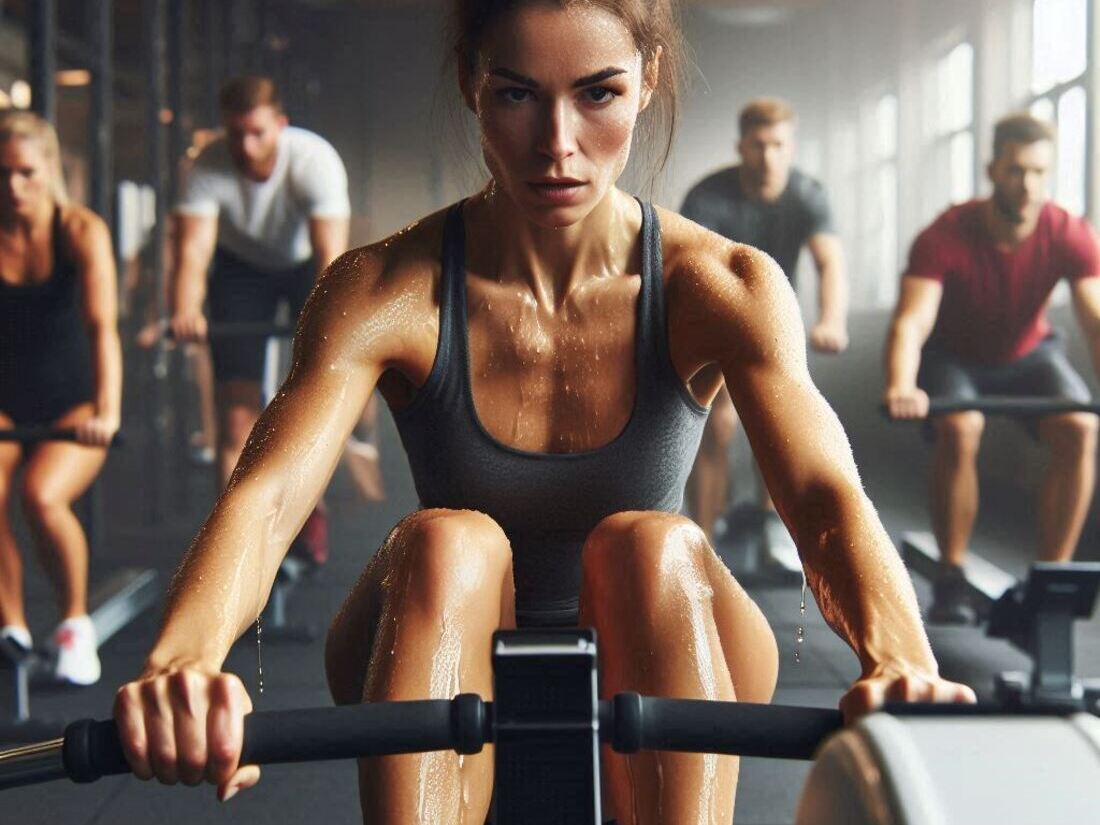
High-Intensity Interval Training (HIIT)
HIIT involves alternating short bursts of high-intensity exercise with periods of rest or active recovery.
This method is highly effective for burning calories and boosting metabolism.
- Workout example: 8 rounds of 30 seconds of high-intensity rowing followed by 30 seconds of rest.
- Tips: Aim for maximum effort during the high-intensity intervals. Gradually increase the number of rounds or the duration of the intervals as you improve fitness.
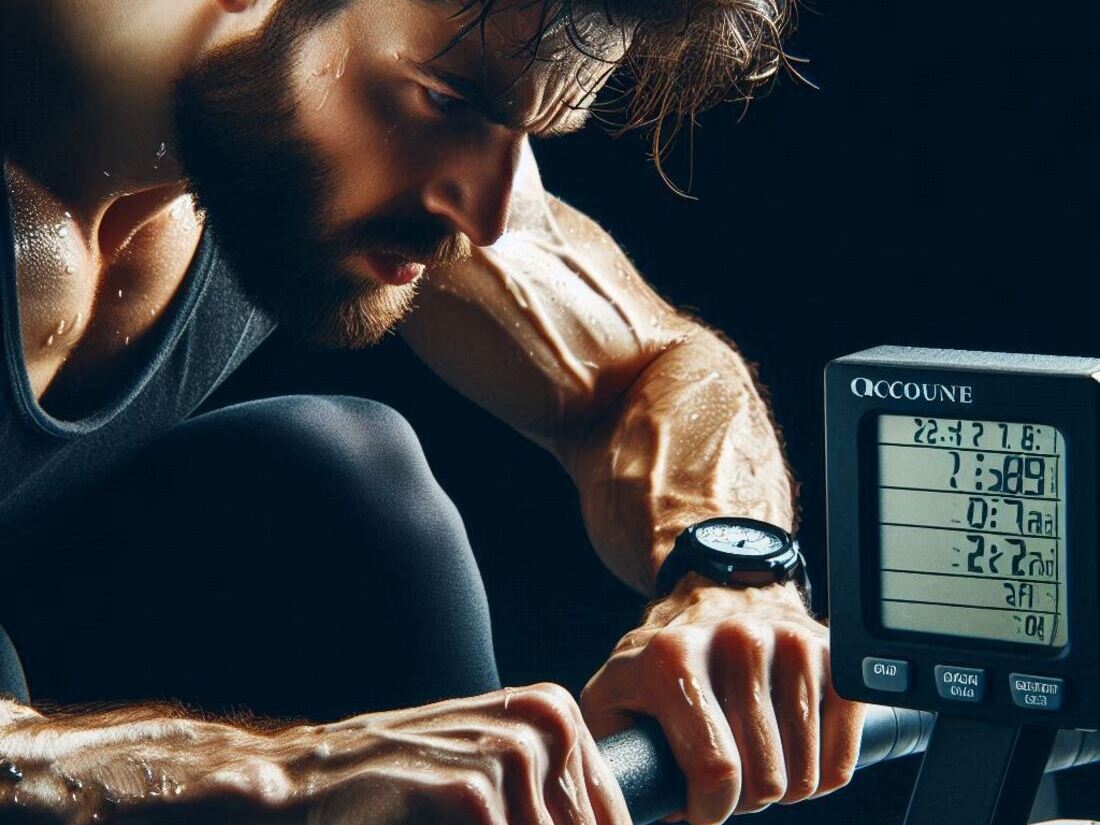
Circuit Training
Circuit training combines multiple exercises in a continuous loop, targeting different muscle groups and elevating heart rate.
Incorporating rowing into a circuit workout can enhance fat burn and overall fitness.
- Workout example: Alternate between 30 seconds of rowing, 30 seconds of bodyweight squats, and 30 seconds of push-ups for 3 rounds.
- Tips: Choose exercises that complement rowing and challenge different muscle groups.

By incorporating these workout variations into your routine, you can effectively target fat loss and achieve your fitness goals.
Key Takeaways: Steady-state rowing is great for endurance, while HIIT maximizes calorie burn. Circuit training combines rowing with other exercises for full-body fat loss.
Rowing Workouts for Muscle Building
Strength-Focused Rowing
To build muscle through rowing, focus on increasing resistance and power output. Incorporate these techniques:
- Higher resistance levels: Adjust your rowing machine to a higher resistance setting to challenge your muscles.
- Slower stroke pace: Emphasize controlled movements to maximize muscle engagement.
- Strength-focused intervals: Alternate between high-resistance rowing and short rest periods.
Incorporating Weights
Combining rowing with weightlifting exercises can accelerate muscle growth. Consider these options:
- Upper body focus: Exercises like dumbbell rows, pull-ups, and push-ups complement the pulling motion of rowing.
- Lower body focus: Squats, lunges, and calf raises target the muscles used in the driving phase of the rowing stroke.
- Full-body circuits: Combine rowing with a variety of weightlifting exercises for a comprehensive workout.
Nutrition for Muscle Growth
Proper nutrition is essential for muscle growth and repair. Prioritize:
- Protein intake: Consume adequate protein to support muscle building.
- Caloric surplus: Ensure you’re consuming enough calories to fuel muscle growth.
- Hydration: Stay hydrated to optimize performance and recovery.
Choosing the Right Workout Type
To effectively achieve your fitness goals, understanding the different types of rowing workouts is crucial.
The following table outlines three primary workout types, their benefits, and how they contribute to fat burn and muscle building.
| Workout Type | Description | Benefits |
|---|---|---|
| Steady-State | Maintaining a consistent pace for an extended period | Improves cardiovascular endurance, burns calories |
| High-Intensity Interval Training (HIIT) | Alternating short bursts of high-intensity exercise with rest periods | Maximizes calorie burn, boosts metabolism |
| Circuit Training | Combining multiple exercises in a continuous loop | Targets different muscle groups, elevates heart rate, promotes fat loss |
By comparing these options, you can select the workout that best aligns with your fitness objectives.
By combining strength-focused rowing with weightlifting and proper nutrition, you can effectively build muscle and achieve your fitness goals.
Key Takeaways: Focus on higher resistance and slower strokes for muscle growth.
Combine rowing with weightlifting for balanced development.
Prioritize protein intake for muscle repair and growth.
Sample Workout Routines
Beginner Routine: Focus on Building Endurance and Basic Technique
- Warm-up: 5 minutes of light rowing at a comfortable pace.
- Main set: 20-30 minutes of continuous rowing at a moderate intensity.
- Cool-down: 5 minutes of easy rowing and static stretches.
Focus: Establish a consistent rowing routine, build endurance, and master proper technique.
Intermediate Routine: Increasing Intensity and Incorporating Interval Training
- Warm-up: 5 minutes of dynamic stretches and light rowing.
- Main set: 20 minutes of interval training (e.g., 30 seconds high intensity, 30 seconds rest, repeated 8-10 times).
- Cool-down: 5 minutes of easy rowing and static stretches.
Focus: Increase calorie burn, improve cardiovascular fitness, and build strength.
Advanced Routine: High-Intensity Workouts for Muscle Growth and Fat Loss
- Warm-up: 10 minutes of dynamic stretches and light rowing.
- Main set: 30 minutes of high-intensity interval training (e.g., 4 minutes high intensity, 1 minute rest, repeated 4-5 times).
- Cool-down: 5 minutes of easy rowing and static stretches.
Focus: Maximize calorie burn, build muscle, and improve power output.
Note: These are sample routines, and you can adjust them based on your fitness level and goals. Always listen to your body and gradually increase the intensity and duration of your workouts.
Tips for Maximizing Results
To achieve optimal results from your rowing workouts, consider these essential tips:
Consistency
Regularity is key to seeing improvements in your fitness level.
Aim for consistent workouts to build endurance, strength, and burn calories effectively.
Proper Form
Maintaining proper rowing technique is crucial for preventing injuries and maximizing results.
Focus on engaging your core, driving with your legs, and coordinating your arms and back for a smooth, efficient stroke.
Cross-Training
Incorporating other forms of exercise into your routine can enhance overall fitness and prevent plateaus.
Activities like running, swimming, or cycling can complement your rowing workouts.
Nutrition and Hydration
Proper nutrition fuels your workouts and aids recovery.
Prioritize a balanced diet with adequate protein, carbohydrates, and healthy fats.
Stay hydrated by drinking plenty of water before, during, and after your workouts.
By following these tips, you’ll optimize your rowing routine and achieve your fitness goals more efficiently.
Key Takeaways: Consistency, proper form, cross-training, and balanced nutrition are crucial for achieving optimal results.
FAQs About Rowing Workouts and Muscle Building
Q: How often should I do rowing workouts to see results?
A: Aim for at least 3-4 sessions per week for optimal results. Consistency is key.
Q: Can rowing help me lose belly fat?
A: While rowing can help burn calories, targeted belly fat reduction requires a combination of exercise and diet.
Q: Is rowing a good workout for people with bad knees?
A: Rowing is generally low-impact, but it’s advisable to consult with a healthcare professional if you have knee issues.
Q: How long should a rowing workout be for muscle building?
A: Incorporate longer, higher-resistance rowing sessions combined with strength training for optimal muscle growth.
Q: Can I build muscle without weights by only using a rowing machine?
A: While rowing can build muscle, combining it with weightlifting exercises will yield better results.
Testimonials
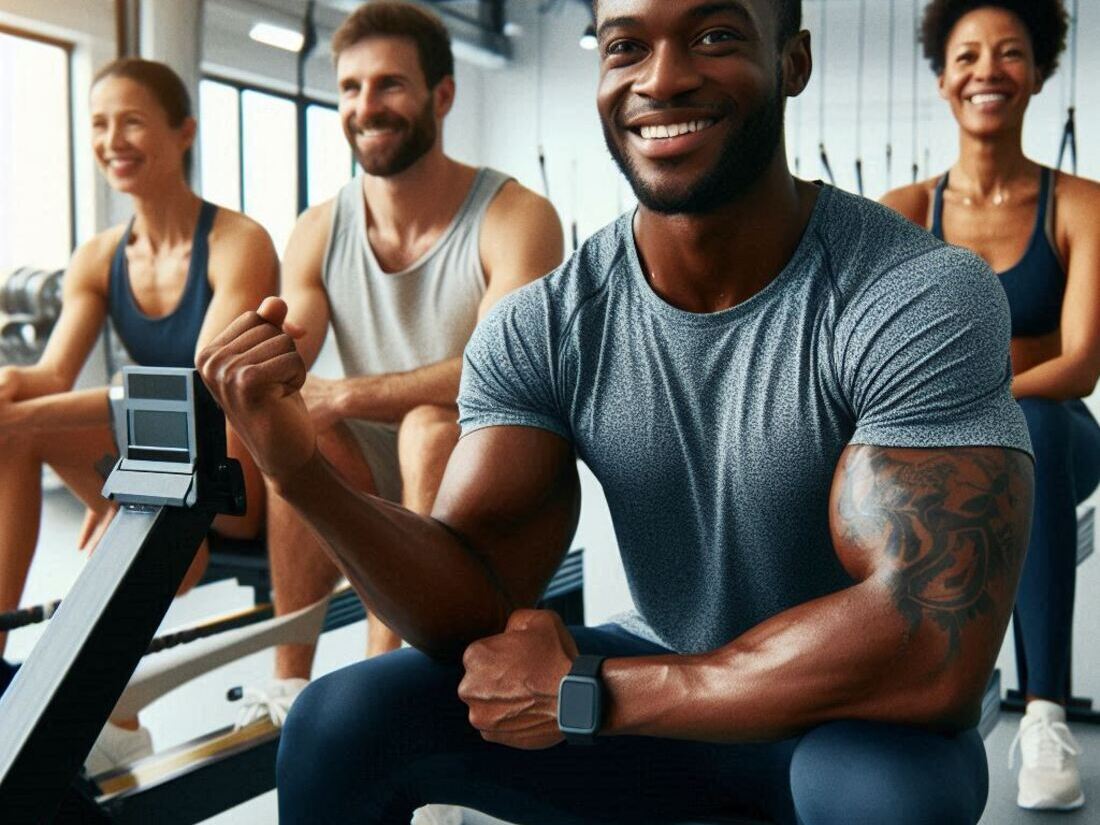
General Rowing Benefits
“I’ve been using my rowing machine for a few months now, and I’ve noticed a significant improvement in my overall fitness. I have more energy, and my clothes fit better.” – Sarah K.
Weight Loss Success
“I was struggling to lose weight, but incorporating rowing into my routine has been a game-changer. I’ve dropped 10 pounds and feel stronger than ever.” – John D.
Muscle Building
“I used to dread strength training, but I’ve fallen in love with rowing. I’ve built noticeable muscle and feel more toned.” – Michael R.
Senior Fitness
“Rowing has been a lifesaver for me. It’s low-impact, and I’ve regained my strength and flexibility. I feel much more confident and independent.” – Evelyn T.
Conclusion
Rowing is a versatile exercise that offers a multitude of benefits for individuals seeking to improve their fitness and overall well-being.
By incorporating rowing into your workout routine, you can effectively burn calories, build muscle, and enhance cardiovascular health.
Experiment with different workout structures, intensity levels, and exercise combinations to find what works best for you.
Remember, consistency is key to achieving your fitness goals.
To further optimize your rowing experience, explore additional resources such as online workout programs, fitness apps, or personal training services.
Start rowing your way to a healthier and fitter you!
Explore our other rowing resources: Conquering Every Budget: Top Rowing Machines For Every Price Point.
References
Training Considerations for Rowing Athletes. National Strength and Conditioning Association (NSCA)

